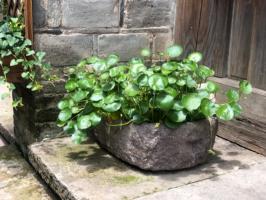Is Plant Fiber from Trees Bad?
Plant fiber from trees has been used for centuries to make paper, textiles, and many other products. However, in recent years, there has been growing concern about the impact of using plant fiber from trees and its effects on the environment. The question of whether plant fiber from trees is bad or not requires a deeper analysis of the pros and cons of using this resource.
The Pros of Using Plant Fiber from Trees
One of the main advantages of using plant fiber from trees is the fact that this resource is renewable. Trees can be replanted and harvested when they reach maturity, making it possible to obtain a steady supply of plant fiber without depleting natural resources. Another advantage of using plant fiber from trees is its strength and durability. Products made from plant fiber from trees are often long-lasting and can withstand wear and tear. Finally, plant fiber from trees is biodegradable, meaning that it can be broken down by natural processes and returned to the environment, reducing waste and pollution.
The Cons of Using Plant Fiber from Trees
On the other hand, there are several negative impacts associated with using plant fiber from trees. One of the most significant is deforestation. Harvesting trees for plant fiber can result in the destruction of vast areas of forests, leading to habitat loss for wildlife, soil erosion, and water pollution. Additionally, deforestation contributes to climate change and reduces the ability of forests to absorb carbon dioxide, a greenhouse gas that contributes to global warming. Another negative impact of using plant fiber from trees is the use of chemicals in the production process. Many paper and textile manufacturers use a variety of chemicals, including bleach and dye, which can be harmful to human health and the environment. Finally, the production and transportation of plant fiber from trees can result in the emission of greenhouse gases, contributing to climate change.
Conclusion
So, is plant fiber from trees bad? The answer is not a simple one. While there are advantages to using this resource, such as its renewability, strength and durability, and biodegradability, there are also significant negative impacts, including deforestation, chemical pollution, and greenhouse gas emissions. To reduce the negative impacts of using plant fiber from trees, it is essential to implement sustainable practices, such as using recycled fiber, reducing chemical use, and planting new trees to replace those harvested. Ultimately, it is up to individuals and businesses to weigh the pros and cons of using plant fiber from trees and make responsible choices that balance environmental impact with economic and social benefits.

 how many times do yo...
how many times do yo... how many planted tre...
how many planted tre... how many pine trees ...
how many pine trees ... how many pecan trees...
how many pecan trees... how many plants comp...
how many plants comp... how many plants can ...
how many plants can ... how many plants and ...
how many plants and ... how many pepper plan...
how many pepper plan...


























